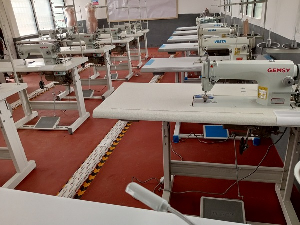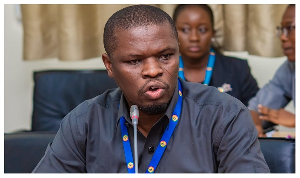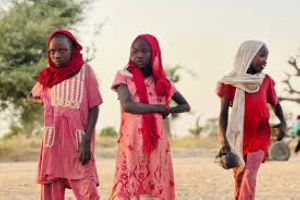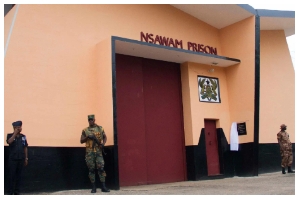The Mamfehene, Osabarima Ansah Sasraku II, Chief of Mamfe in the Eastern Region is rolling out several interventions aimed at equipping the youth with various vocational skills.
With many youths solely pursuing elusive white-collar jobs, overlooking the potential benefits of skilled training for financial independence and personal growth, it's become imperative to underscore the relevance of skills training in today's society.
The chief's initiatives which include the provision of uniforms for deprived basic school children and Technical and Vocational Education and Training (TVET) as well as digital literacy, are aimed at equipping the beneficiaries with the tools needed to step out of their comfort zones and establish self-reliance.
The last Akwasidae marked by the chiefs and people of Mamfe offered the traditional authorities the opportunity to highlight various intended interventions in the lives of the youth.
Provision of School Uniforms
A routine visit by Osabarima Ansah Sasraku II and his elders to some of the basic schools in the community revealed a dire situation regarding the lack of uniforms for some of the pupils.
“A couple of months ago, my elders and I went around as usual to visit some of the basic schools to acquaint ourselves with their learning challenges and what interventions we could make. We realized that there are a few students and some learners whose school uniforms needed something to be done about,” explained the traditional leader in an interview.
While emphasizing that bad school uniforms dipped the confidence levels of pupils, the chief said that as part of efforts to address the problem, the traditional council, in consultation with the school heads, identified some 250 needy students from various basic schools in the community who urgently needed uniforms.
As part of their commitment to contribute their quota to address societal challenges, the tailors and dressmakers within the community opted to sew the uniforms for free with materials provided by the traditional council.
During the Akwasidae festival, the pupils received uniforms from Osabarima Ansah Sasraku II, which is expected to boost their morale and raise their confidence levels.
Youth Empowerment
With youth empowerment also standing out as a priority of the Mamfehene, the chief embarked on another initiative to arm the youth with skills aimed at equipping them with the necessary knowledge to enable them to make a living.
The aim was to enroll a number of young people on a technical training institute.
Design Technology Institute (DTI) located at Mamfe accepted to train the young persons, training twelve of them in three fields including precision welding and fabrication, design innovation, and entrepreneurship.
Explaining the rationale behind the initiative, the revered chief noted that empowering the youth was the right step towards persuading them away from social vices including petty thievery, gambling, drug abuse, etc., and thereby reducing poverty in the community.
He said, “Sometime last year, we saw the need to equip our youth with some skills… our thinking is if we could equip these young men and women who ordinarily would be walking the streets without doing anything with some skills, we would gradually be reducing the poverty levels.”
Technical and Vocational Education and Training Center
Osabarima Ansah Sasraku II emphasised the critical role of practical skills in today’s rapidly evolving world. He underscored the importance of Technical, Vocational Education and Training (TVET) programmes, designed to equip young people with industry-relevant skills that are essential for sustainable livelihoods.
A TVET centre has thus been established at the community centre to offer training to the youth, with fully equipped ICT and garment and fashion departments.
The two departments have been fully equipped with computers and electric sewing machines to provide skills training including ICT and dressmaking skills for the first batch of students who would be admitted pending the granting of official accreditation to the institute.
Underscoring the essence of establishing the training facility, Nana Sasraku noted, “If you go there, you’ll see the equipment that we brought there…all in a bid to get the youth off the streets, we get them properly engaged in economically viable and productive ventures so that they become good citizens onto themselves and to the community to benefit all of us.”
Encouraging the youth to enroll in these initiatives, he highlighted their potential to enhance employment prospects and foster economic independence.
Conclusion
The initiatives being undertaken by Osabarima Ansah Sasraku II are expected to address youth unemployment in the community by empowering them with the necessary skills. It’s therefore important for all stakeholders, home and abroad to contribute their quota to ensure the success of the program.
It is also imperative for the youth to capitalize on the skills training programmes for a secure future as equipping oneself with practical skills not only empowers individuals but also contributes to national development by addressing skills gaps in various sectors.
Regional News of Thursday, 3 October 2024
Source: Michael Oberteye, Contributor

















